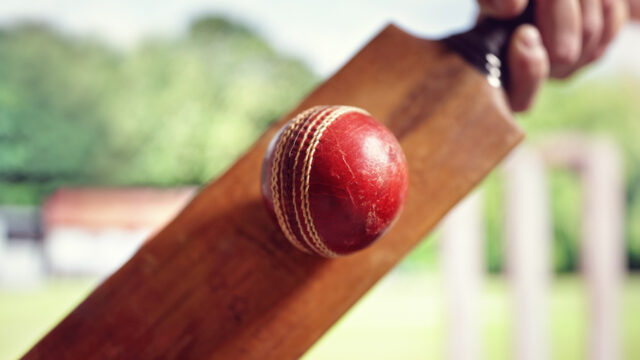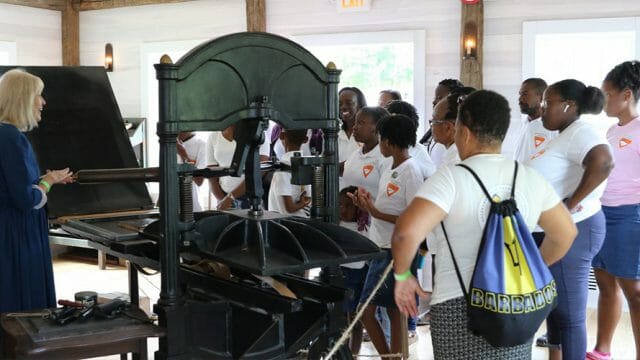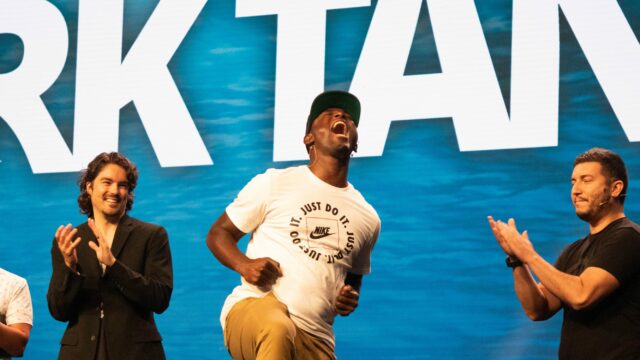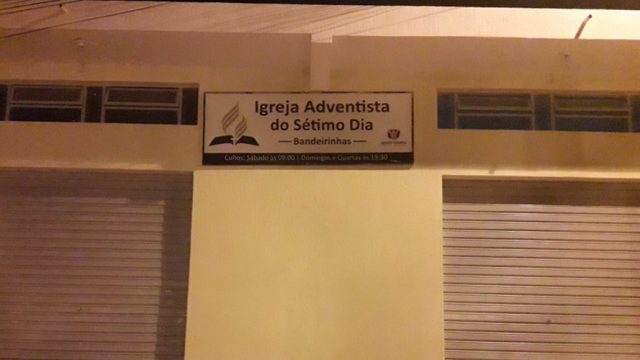The collaborative work of scientists at La Sierra University and Walla Walla University in the United States has widened the scientific window into […]
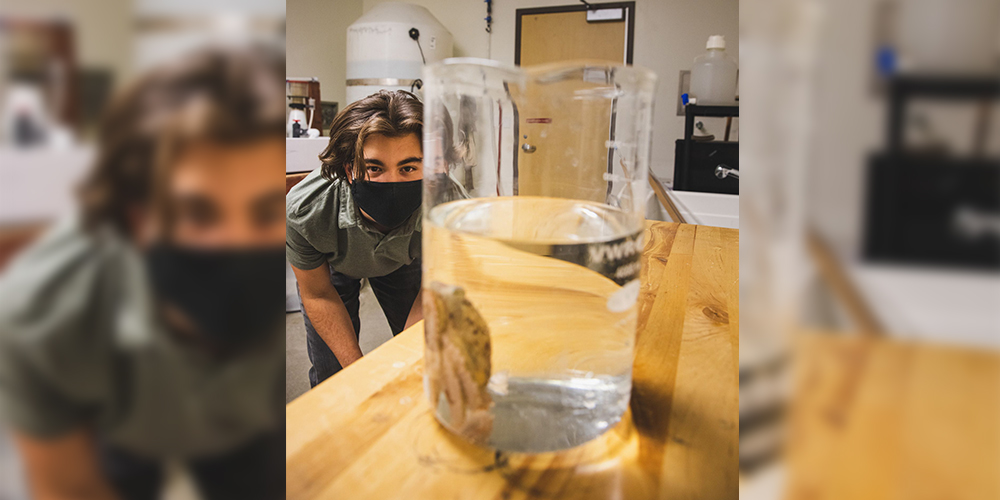
The collaborative work of scientists at La Sierra University and Walla Walla University in the United States has widened the scientific window into the potential effects of climate change and garnered international coverage of their findings.
At times using innovative equipment they engineered themselves, marine biologists Lloyd Trueblood, an associate biology professor at La Sierra University in Riverside, California, and Kirt Onthank, an associate biology professor at Walla Walla University (WWU) in Walla Walla, Washington, analyzed the East Pacific ruby octopus or Octopus rubescens in one- and five-week studies at WWU’s collaborative Rosario Beach Marine Laboratory. It was the first analysis of octopus that compared short and long-term effects of seawater acidified through increased carbon dioxide levels. Previous short-term studies had focused on squid and cuttlefish.
The journal Physiological and Biochemical Zoology from the University of Chicago Press published Trueblood and Onthank’s research. It issued a press release in January 2021 announcing findings that showed the octopuses had adapted to increased seawater acidity by returning to and maintaining normal metabolic rates or energy usage levels after an initial reaction in which they used more energy following a first exposure.
Results also showed that while their metabolic rate stabilized after one week, the octopuses had a decrease in their tolerance of hypoxia (decreased environmental oxygen), a potentially significant problem for animals that make their homes and hiding places in dens where stagnant water further decreases water-borne oxygen supplies.
Because the research was the first of its kind and sheds significant light on the octopus’s potential adaptability over time to increased carbon dioxide, which is linked to climate change, the journal’s press release garnered attention from numerous media outlets and websites around the world, serving at least 10 countries. These include India, the Czech Republic, Israel, Jordan, and Canada, as well as the U.S. The coverage appeared in outlets such as Science Daily, Science magazine, Yahoo! News, and Environmental News Network.
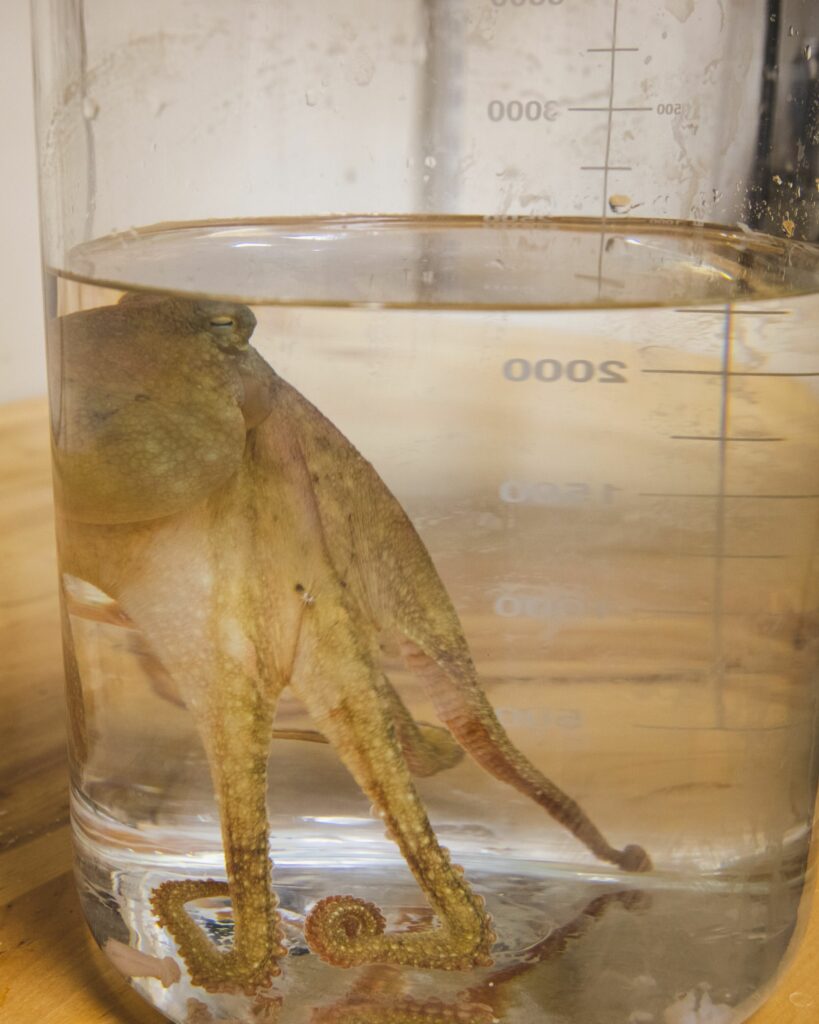
Ocean acidification occurs when carbon dioxide, or CO2, which results from the burning of fossil fuels, dissolves into the ocean, dropping pH levels and increasing seawater acidity. According to the U.S. National Oceanic and Atmospheric Administration (NOAA), the ocean absorbs about 30 percent of the CO2 released into the atmosphere, resulting in harm to marine life. Trueblood and Onthank are building on the results from their five-week study and exploring methods the octopus may be using to overcome the stress of acidic oceans, such as editing RNA, changing gill transport proteins, and modifying blood oxygen–carrying proteins. Students in both of their labs are assisting with the process.
Collaboration Is Key
The two scholars both earned master’s degrees in biology from Walla Walla University, Trueblood in 2002, six years ahead of Onthank, who was an undergraduate at the time. The two did not cross paths, however, until Trueblood was three years into his doctoral studies at the University of Rhode Island, around 2006. “I was having a hard time doing some data management, and I called my professor at Walla Walla for ideas, and he’s like, ‘I don’t know how to do that, but there’s this kid here [who] probably does.’ And so I got on the horn with Kirt, and he helped me develop this pivot table thing to do some data management stuff,” Trueblood said.
Later on, as Onthank was pursuing doctoral research on eye lenses for various cephalopods as a means of tracking their life events, he contacted Trueblood in search of eyeball specimens to analyze from the cephalopod species Trueblood had been studying. Trueblood made arrangements for the requested material to be mailed to Onthank. “Since then, we just kind of kept track of each other,” Trueblood said.
Trueblood received his doctorate from the University of Rhode Island in 2010, and Onthank earned his in 2013 from Washington State University. Onthank had worked with octopuses during undergraduate and graduate training at Walla Walla and currently studies marine invertebrate physiology, particularly cephalopods such as octopus and squid, in the Onthank Physiology Lab. He viewed the study of the impacts of ocean acidification “as kind of the big pressing question about what’s going to happen to octopuses going forward,” he said.
Mother of Invention
Substantive, long-term scientific study of the effects of ocean acidity can be cost-prohibitive. Scientists who are short on budget and big on the desire to test hypotheses must invent ways to achieve their goals. To conduct a longer-range study of the ruby octopus, the scientists needed a way to control pH and CO2 levels and temperatures in specially formulated saltwater tanks, one tank per octopus. Using inexpensive Arduino computer electronics boards and grant funding, Onthank designed systems for multiple tanks that would precisely control functions for the five-week analysis.
Meanwhile, Trueblood used equipment he had previously built for research on another project to conduct the short-term study of the ruby octopus. He tossed a variety of technical gear, optodes, electrodes, water baths, respirometers, and other equipment into his car and drove north to Washington. “So that way we were able to get a short-term-long-term data set because we were pooling our resources … and we could end up with this big study,” Trueblood said.
The long-term study was particularly important as prior ocean acidification effect studies had all focused on shorter periods of exposure, Onthank said. “That doesn’t really replicate what’s going to happen down the road. [It’s] another way to be showing, do these short-term experiments really reflect what we would see for a long-term chronic problem that’s going to be occurring in nature, or are you seeing more of a stress response in these short-term studies,” he said.
“We’re still trying to figure out the mechanism, right. We see this big spike in routine metabolic rate, and then it comes right back down,” Trueblood added. “And, you know, there are a couple of different areas that were suspect of that spike, and this is in part why my students are trying to do blood samples now. It’s a stress response, but we are still searching for the mechanisms that drive it.”
To avoid investing in costly equipment for analyzing blood samples, Trueblood is again turning to invention using a 3D printer to fabricate a small instrument that holds a very small blood sample. Blood samples are placed in a machine called a spectrophotometer that shines a light through the blood. The level of oxygen in the blood is determined based on color. “Octopus blood goes from blue to clear, so measuring how blue it is tells us how much oxygen is there,” he said.
Building Blocks
The scientists’ labs and their students have continued to build upon the five-week study findings from 2014. Onthank’s lab, which typically involves three graduate student researchers focused on octopus ocean acidification projects, has pursued several studies and made additional findings. “Their immune system is being activated and turned up with long-term exposure,” Onthank said.
“And now we’re looking at another thing octopuses, and cephalopods do, this crazy thing where they edit their RNA,” he said. “It’s something that essentially all animals can do, but they don’t really use it all. Whereas octopus and squid use it a ton,” affecting upwards of 60 percent of all their genes, Onthank said.
Just 10 minutes. That’s how long Trueblood’s student researchers have to extract a drop of blood using a tiny syringe to reach a vessel the size of angel hair pasta hidden inside of a small, slippery octopus. It is a difficult procedure but critical along with work in Onthank’s lab to furthering the scientists’ groundbreaking research.
La Sierra University undergraduates Shannon Grewal and Danny Bazan are the latest students to make blood extraction attempts, currently working with three ruby octopus specimens that arrived at Trueblood’s lab via FedEx on January 13, 2021. The students follow strict European-standard animal welfare protocol, which involves first anesthetizing the creatures and minimizing their time out of their specially formulated saltwater tanks. Trueblood traveled to WWU’s Rosario Beach Marine Laboratory in Washington State in January to work remotely and begin a research sabbatical in March. He guides his students in their blood-drawing efforts from afar via Zoom video conferencing. Over the past year or so, students have been attempting to draw blood from octopuses gathered from various locations along the coasts of California and Washington toward assessing blood oxygen levels. Over the years, only a handful of useable blood samples have been collected, with only one successful sample collected by his two students thus far, Trueblood said. “That’s half the challenge. Getting blood [from] intact animals is incredibly difficult.”
The octopuses currently residing in Trueblood’s lab were mailed in a special aquarium box in January. They arrived 18 hours after being extracted from the Pacific Ocean along California’s central coast by a permitted marine collector. The small cephalopod species typically weighs between 3.5 and 5.3 ounces (100 to 150 grams) and has an arm length of roughly 12 to 16 inches (30 to 38 cm).
Trying to draw blood for research is difficult but fun, senior biomedical sciences major Grewal said. “It’s a puzzle you have to solve. There aren’t many people who extract blood from octopuses, so it’s a surprise every time. It’s quite an adventure.”
Grewal aims for a career in dentistry and will attend the University of Michigan School of Dentistry in fall 2021. She believes her work in the biology lab has increased her critical thinking and problem-solving skills and fine-tuned her manual dexterity. “This lab has taught me skills that will help me succeed in dental school and my future career,” she said.
Bazan, who will travel to join Trueblood at the Rosario Beach Marine Lab later this year, studied in virology and neuroscience labs before being accepted into Trueblood’s marine biology lab. He became interested in his current career path after participating in the SEA-PHAGES virology lab his freshman year. Working with live animals has been an eye-opening experience, he said. “I feel as though there’s a different type of responsibility,” Bazan said, “so for me as a budding researcher and hopefully as a physician-scientist, that directly translates to not only practical skills but also in patience and the intentionality of treatment. I think that has opened my eyes to a different way of doing research. I’m so grateful I had a chance to experience this intertwining of the practical and theoretical, and I get to be a part of something that’s going to affect a lot of people for generations to come.”
The original version of this story was posted on the La Sierra University news site.


